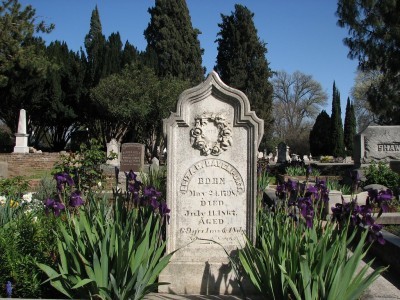






Cemeteries are peaceful places for contemplation and reflection. The newly bereaved may wonder, “Can I plant flowers in a cemetery?” Yes, you can, though some cemeteries may have restrictions you need to follow. You can use flowers and plants to make the area attractive and commemorate someone’s life and our connection to them.
You must consider the size of the plant and be respectful of others who will visit the area. Graveside plantings should be small enough and manageable for long service as natural sentinels near the plot. Choose carefully when selecting plants for graves to provide a serene, non-invasive backdrop for a sensitive location.
Most cemeteries have guidelines about what sizes and types of plants are allowed. The maintenance crews will have to be able to work around them without damaging the plants or causing more work. Trees or shrubs that become large or unruly over time are not a good choice.
When choosing plants for graves, consider what your loved one enjoyed the most. Was there a particular plant or flower that he/she really favored? The graveside garden plot can be used to reflect those preferences and help bring back good memories and provide solace. Additionally, the choice should take into consideration the light levels and moisture availability.
Flowers are a natural choice for graveside garden plots. Perennial flowers will provide visitors with annual color but they do need some maintenance to prevent spreading and messy habits. Annual flowers are a perfect choice but they require frequent supplemental watering. You will also have to plant a new display every year. Another way to provide plants for graves is to use containers. Again, you will need to check with the caretaker, but if containers are allowed, they prevent invasiveness and are smaller maintenance spaces.
Plots that are surrounded by trees are a challenge to populate with plants due to the shade. However, there are some shade loving plants that would be suitable including:
Avoid larger shrubs such as rhododendrons or camellias, which could take over the plot and obstruct the gravestone. Flowering bulbs, such as iris or hyacinth, are a good choice but the plants will start to spread over time into the turf.
Flowers good for planting on a grave are low-spreading varieties that can handle frequent mowing. Some varieties of ajuga, flowering thyme or even sedum will make colorful seasonal flower cover for the grave. Consider the height of the plant when choosing flowers good for planting on a grave. Some flowers will get quite tall and cover the gravestone.
Planting native species around the grave is one of the best and lowest maintenance ways to provide greenery or flowers as a memorial. The graveside garden plot that relies upon native species will not need as much water and will blend into the natural surroundings. These plants will need less fuss and cannot be considered invasive, as they are a natural part of the wild species.
Check with the cemetery caretaker to determine which plants are acceptable for the graveside garden plot. Whatever choice you make, amend the soil with plenty of compost to help conserve moisture. If you are not going to be available to come water the plants, they may have to rely upon natural moisture or any extra spray from lawn irrigation.
Copyright © www.100flowers.win Botanic Garden All Rights Reserved